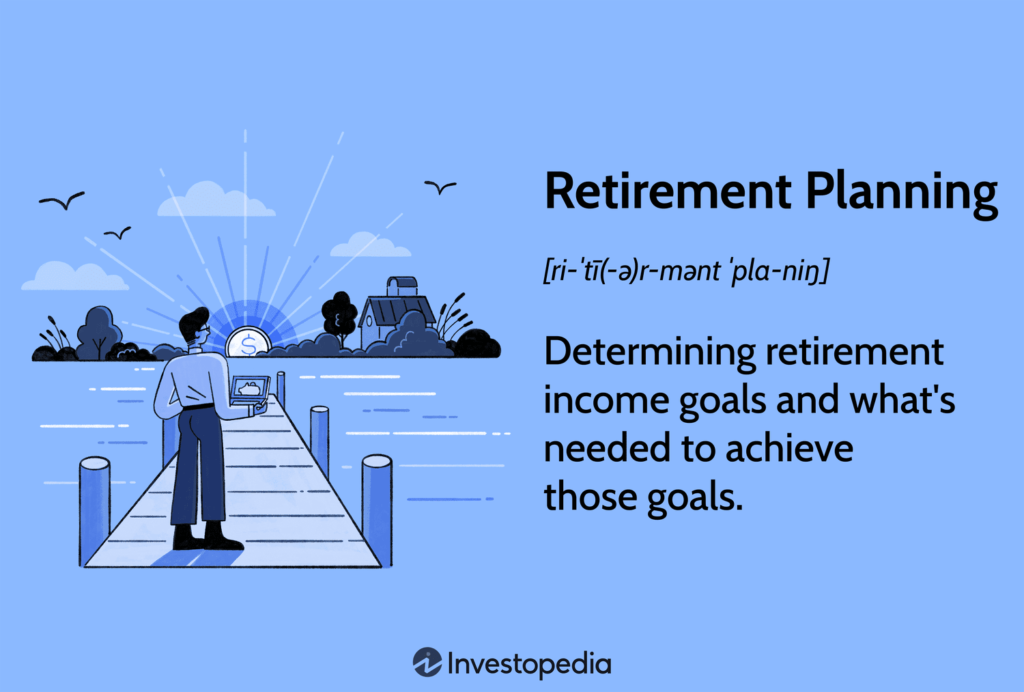
Planning for retirement may not feel urgent in your 30s, especially when you’re focused on building your career, paying off student loans, or buying your first home. However, this decade is actually the most powerful time to lay a strong financial foundation for your future.
Financial experts agree that starting retirement savings early gives you a major advantage—thanks to the power of compound interest and long-term investing. If you’re in your 30s and haven’t started yet, don’t worry. The best time to begin is now.
This article will explore the best retirement plans Americans should start in their 30s, why they matter, and how you can get started even on a modest income.
Why Retirement Planning in Your 30s Is So Important
Many people in their 30s believe they have decades left to save for retirement. While technically true, this mindset can delay action—and lost time is one of the biggest threats to retirement savings.
Here’s why starting now makes sense:
- Compound Growth: The money you save now has more time to grow.
- Lower Monthly Contributions: You can invest smaller amounts now rather than large sums later.
- Peace of Mind: A retirement plan gives you confidence and reduces future stress.
- Better Financial Habits: Early planning builds discipline and awareness about money.
Top Retirement Plans to Start in Your 30s
1. 401(k) Plan — Take Full Advantage If Your Employer Offers It
A 401(k) is a retirement savings plan offered by many American employers. Contributions are deducted directly from your paycheck, making it a convenient and automatic savings tool.

Why It’s Smart in Your 30s:
- Employers often match contributions—this is free money.
- Contributions are tax-deferred, reducing your taxable income.
- It encourages consistent investing over time.
Pro Tip:
Always contribute enough to get the full employer match. If your employer matches 50% of up to 6% of your salary, contribute at least that much to take full advantage.
2. Roth IRA — Tax-Free Growth for Long-Term Wealth
A Roth IRA (Individual Retirement Account) allows you to contribute after-tax dollars, but your money grows tax-free, and you won’t pay taxes when you withdraw it at retirement.

Why It’s Ideal in Your 30s:
- You’re likely in a lower tax bracket now.
- Contributions can be withdrawn without penalty (not the earnings).
- It’s flexible, especially if you’re self-employed or changing jobs.
Limitations:
As of 2025, the annual contribution limit is $7,000 for individuals under 50.
3. Traditional IRA — A Good Option If You Don’t Have a 401(k)
A Traditional IRA allows you to contribute pre-tax dollars and pay taxes when you withdraw in retirement.
Key Benefits:
- Lower your taxable income now.
- Choose from a wide range of investment options.
If you earn too much to contribute to a Roth IRA, a Traditional IRA might be a better fit. You can also consider a backdoor Roth IRA, which allows high earners to convert a Traditional IRA into a Roth.
4. Health Savings Account (HSA) — A Hidden Retirement Tool
If you have a high-deductible health plan, an HSA is a powerful savings account that can also work as a retirement fund.
Triple Tax Benefit:
- Contributions are tax-deductible.
- Money grows tax-free.
- Withdrawals for medical expenses are tax-free.
After age 65, you can withdraw HSA funds for any purpose, paying only income tax (similar to a Traditional IRA).
5. SEP IRA or Solo 401(k) — For Freelancers and Small Business Owners
If you’re self-employed, don’t worry—you still have solid retirement options.
- SEP IRA: Easy to set up and allows high contribution limits.
- Solo 401(k): More flexible, especially if you want to make both employee and employer contributions.
These plans help self-employed professionals save aggressively while reducing their tax burden.
How Much Should You Save?
A common rule is to save at least 15% of your income toward retirement, including any employer match.
But even if you can’t hit that number now, start with what you can—even 5% or $100/month. The goal is consistency.
Example:
If you start saving $300/month at age 30, with an average return of 7% per year, you could have over $370,000 by age 65.
Tips to Maximize Your Retirement Plan in Your 30s
- Automate Your Savings: Set it and forget it. Automation removes the temptation to skip.
- Increase Contributions Yearly: Raise your savings rate every time you get a raise.
- Avoid Early Withdrawals: They come with penalties and taxes, and hurt your growth.
- Choose Low-Cost Index Funds: They offer broad market exposure with low fees.
- Track Your Progress: Use apps or spreadsheets to monitor and adjust.
Common Retirement Planning Mistakes to Avoid
- Starting Too Late: Waiting until your 40s or 50s puts pressure on your finances.
- Not Taking Employer Match: Missing out on free money is a big mistake.
- Ignoring Inflation: Your future dollars will be worth less than today’s.
- Relying Only on Social Security: It won’t be enough to maintain your lifestyle.
Final Thoughts
Your 30s are the perfect time to get serious about retirement planning. Even small actions taken today can lead to big rewards tomorrow. Whether you work for a company, run your own business, or are just starting to get financially stable, there’s a retirement plan that fits your life.
The most important step is to start now. Time is your greatest ally in building wealth—and the sooner you begin, the more freedom you’ll enjoy later.
So take control, make a plan, and invest in your future self. Retirement may seem far away, but a strong foundation today will give you more choices and peace of mind in the decades to come.
Read More :- The Best Story Behind Route 66: America’s Highway Icon


